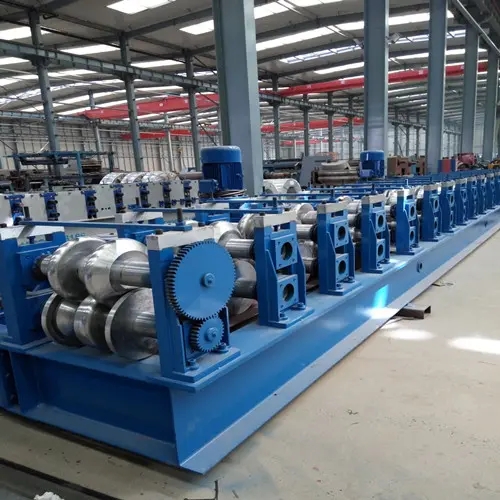
Understanding Metal Stud and Track Equipment An Essential for Modern Construction
In the realm of modern construction, the use of metal stud and track equipment has gained significant traction among builders and contractors. This equipment plays a crucial role in the framework of walls, ceilings, and various architectural designs, offering a myriad of benefits over traditional wood framing. As construction techniques evolve and the demand for efficiency, durability, and sustainability increases, metal studs and tracks have emerged as a preferred choice in both residential and commercial projects.
Composition and Types of Metal Studs
Metal studs are typically made from galvanized steel, which offers excellent resistance to corrosion, fire, and pests—three critical factors in ensuring the longevity and safety of a building. The two primary types of metal studs are C-studs and U-tracks. The C-studs serve as vertical framing members, while the U-tracks are used at the top and bottom to create a sturdy framework. Together, these components support various interior finishes, such as drywall, plaster, or other materials, to achieve the desired aesthetic and functional quality of walls.
Metal studs are available in various sizes and gauges, allowing builders to select the appropriate type based on the specific requirements of the project. This versatility extends not only across different building types but also according to load-bearing needs and design specifications.
Advantages Over Traditional Wood Framing
1. Durability One of the most significant advantages of metal studs is their durability. Unlike wood, metal is impervious to warping, splitting, and cracking, which are common problems in timber framing. This inherent strength leads to a more stable structure over time, reducing the likelihood of costly repairs.
2. Fire Resistance Metal is non-combustible, which enhances the fire resistance of a building. This characteristic is particularly critical in areas with stringent safety codes and regulations, making metal studs an essential choice for commercial buildings, schools, and hospitals.

3. Cost-Effectiveness Although the initial investment in metal stud and track equipment can be higher than traditional wood, the long-term cost savings are significant. Metal framing reduces material waste, decreases the need for maintenance, and can lead to reduced labor costs due to quicker installation times.
4. Environmental Impact With a growing emphasis on sustainability, metal studs have an edge over wood, as they can be made from recycled materials and are themselves fully recyclable at the end of their life cycle. This aligns with eco-friendly construction practices and helps reduce the carbon footprint of building projects.
5. Precision and Consistency Metal studs are manufactured to precise specifications, which ensures consistent quality across the board. This precision makes them easier to work with, and their weight allows for straightforward handling and installation, especially when working in confined spaces.
Applications in Construction
Metal stud and track equipment is widely utilized in various applications, including residential buildings, office spaces, hospitals, and educational institutions. These materials are particularly favored in partition walls, where lightweight and non-load-bearing structures are needed. The equipment allows for innovative designs and flexibility in layouts, accommodating the diverse needs of contemporary architecture.
Furthermore, the integration of metal studs and tracks into acoustic wall systems enhances sound insulation, making them popular in settings like recording studios, conference rooms, and theaters.
Conclusion
The evolution of metal stud and track equipment has profoundly impacted the construction industry. As builders and architects strive for efficiency, safety, and sustainability, the advantages of metal framing become increasingly apparent. With its durability, fire resistance, cost-effectiveness, and precision, metal stud and track equipment stands as a cornerstone of modern construction practices, paving the way for innovative designs and superior building standards. As the industry continues to evolve, the reliance on metal framing is likely to grow, reflecting a paradigm shift towards more resilient and sustainable construction methodologies.